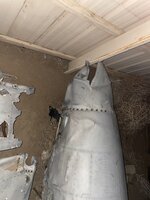I'm not finding anything on it yet but wonder if that small radar shown in the cutaway diagram was an early version of the AN/APG-30 fire control radar used in the F-86E/F later on to great effect, or a figment of the diagram drawers imagination. 
Last edited:

